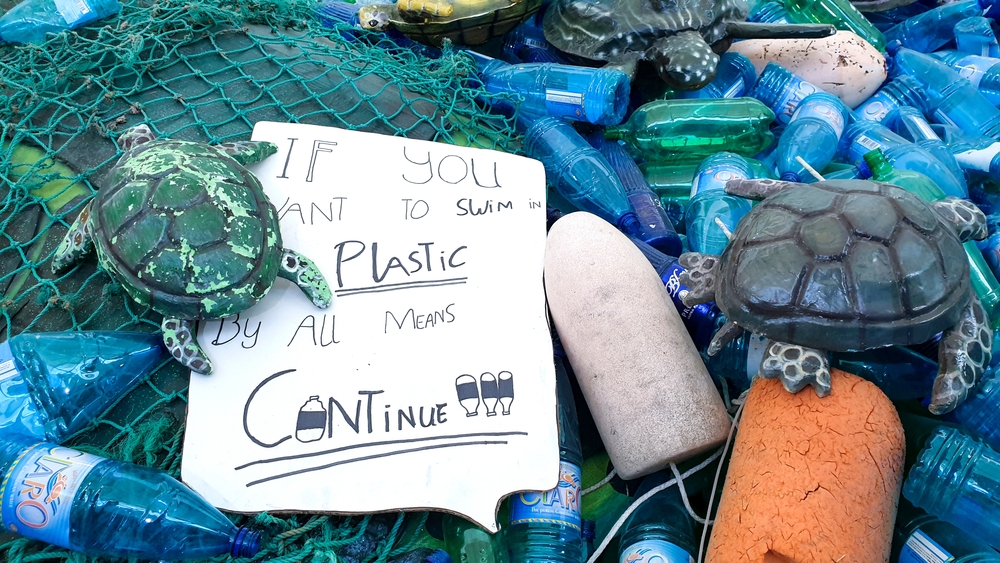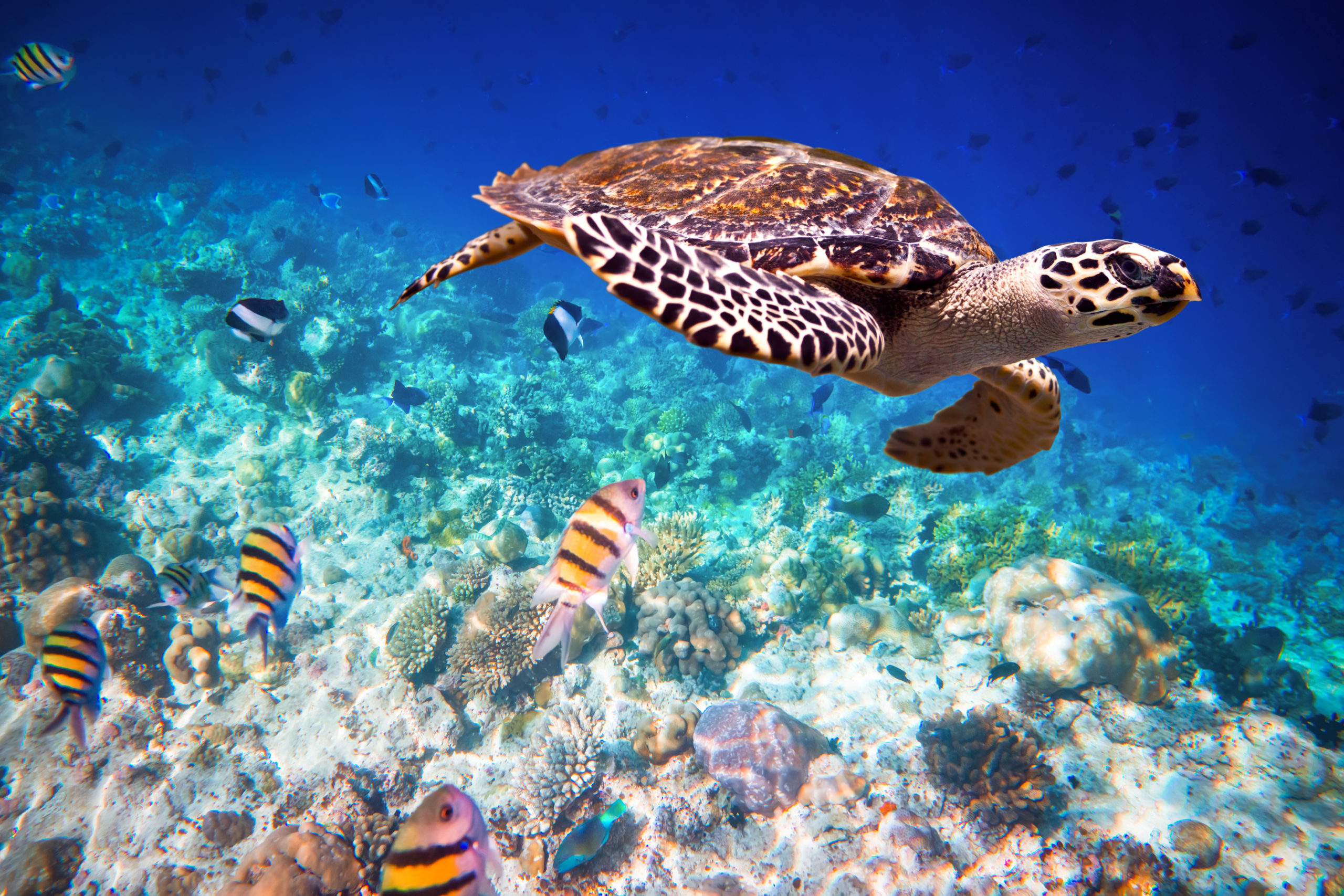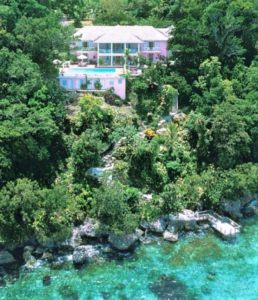
In St. Mary, on the north coast of Jamaica, there is a lovely pink home perched atop a 20-meter high cliff with a long wooden staircase stretching down to the turquoise waters and rocky shoreline below. The property was sold, and in 2017 the new owners began the intensive process of creating a sandy beach. What no one expected was that this man-made beach, which Smith Warner International completed just two years ago, would quickly become a nesting ground for hawksbill turtles.
Round Trip Home
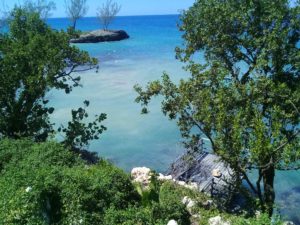 Those who study or observe sea turtles know that after years of swimming hundreds if not thousands of kilometers from home, females return to nest remarkably close to the beach where they were born. Clearly, no turtles were born on the rocks below this St. Mary property. But Belinda Collier-Morrow, co-chair of the White River Fish Sanctuary in Ocho Rios, Jamaica, says hawksbills often find a nesting spot within about half a kilometer of where they were born. Researchers have determined that sea turtles use Earth’s magnetic field like a personal GPS.
Those who study or observe sea turtles know that after years of swimming hundreds if not thousands of kilometers from home, females return to nest remarkably close to the beach where they were born. Clearly, no turtles were born on the rocks below this St. Mary property. But Belinda Collier-Morrow, co-chair of the White River Fish Sanctuary in Ocho Rios, Jamaica, says hawksbills often find a nesting spot within about half a kilometer of where they were born. Researchers have determined that sea turtles use Earth’s magnetic field like a personal GPS.
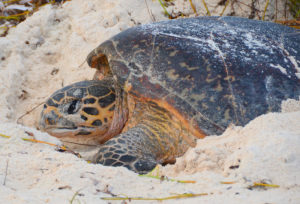 Dr. Julia Horrocks, Director of the Barbados Sea Turtle Project and a professor of Conservation Ecology at the University of the West Indies, Cave Hill, Barbados says there are many factors that determine where a female turtle will choose to nest. “If there has been bad weather and they have been deterred from nesting for several nights by high seas, they may go onshore on a nearby beach because they need to lay their eggs somewhere,” she explains. Bright lights from development on the beach where the turtle itself was hatched are another possible deterrent, as is severe erosion. “It’s rare,” Dr. Horrocks wrote in an email, “But we’ve even had some turtles change coasts within a nesting season when beaches are severely eroded.” Sea turtles often search out nutrients in the brown algae called sargassum, and sometimes travel east in the Atlantic toward the Sargasso Sea to feed. But sargassum arriving in record amounts on Caribbean beaches can block what otherwise would have been an ideal nesting spot.
Dr. Julia Horrocks, Director of the Barbados Sea Turtle Project and a professor of Conservation Ecology at the University of the West Indies, Cave Hill, Barbados says there are many factors that determine where a female turtle will choose to nest. “If there has been bad weather and they have been deterred from nesting for several nights by high seas, they may go onshore on a nearby beach because they need to lay their eggs somewhere,” she explains. Bright lights from development on the beach where the turtle itself was hatched are another possible deterrent, as is severe erosion. “It’s rare,” Dr. Horrocks wrote in an email, “But we’ve even had some turtles change coasts within a nesting season when beaches are severely eroded.” Sea turtles often search out nutrients in the brown algae called sargassum, and sometimes travel east in the Atlantic toward the Sargasso Sea to feed. But sargassum arriving in record amounts on Caribbean beaches can block what otherwise would have been an ideal nesting spot.
For a turtle to nest successfully, she has to be able to dig a body pit and egg chamber (or nest) and then camouflage it with sand. Females often lay eggs in four or five separate nests within a season. The slope of the beach, type of sand, and lighting all play a role in her choice of location. Importantly, sand on the beach must not be too compact. If so, the hatchlings may be deprived of oxygen or unable to break through the sand-covered nest and, tragically, could suffocate.
Sand and Slope
The tranquil beach at the St. Mary property is made of marine sand from The Bahamas which was transported to Jamaica. Smith Warner coastal engineer Cabral Barriteau-Foster, who managed the beach creation says, “We have learned a lot from this experience. We are gratified that we made the right decision on the type of sand to use in this project and that the slope of the beach was appropriate not only for humans but for the turtles looking to nest.”
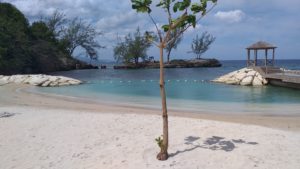
Hawksbill, green, leatherback, and Kemp’s ridley turtles are considered endangered, and loggerhead turtles are listed as threatened species. These turtles are protected under international agreements. Conservation programs have been successful in helping to rebuild turtle populations. Ensuring that there are sandy, gently-sloped beaches where females can safely nest and where the hatchlings can emerge and reach the sea is a major step in carrying on this progress.
![]()
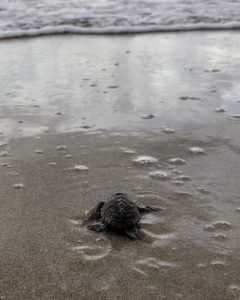 Belinda Collier-Morrow of the White River Fish Sanctuary says, “I think it’s a very positive thing that they’ve found this beach, which is obviously new.” She adds, “Development has a lot of negative things. Destroying corals for example. But it happens. It’s the way of the future, like it or not. But on the positive side, you’ve created a beach. It’s not even three years old and already the turtles are coming to lay.”
Belinda Collier-Morrow of the White River Fish Sanctuary says, “I think it’s a very positive thing that they’ve found this beach, which is obviously new.” She adds, “Development has a lot of negative things. Destroying corals for example. But it happens. It’s the way of the future, like it or not. But on the positive side, you’ve created a beach. It’s not even three years old and already the turtles are coming to lay.”
Collier-Morrow and her colleagues are tagging turtles so they can continue to study their habits and how often they return to the same or nearby beaches to nest. So far, they estimate that hawksbills typically return every two weeks “almost to the day” during the nesting season and, depending on the maturity of the turtle, they’ll come back two to four times, unless something disturbs them.
